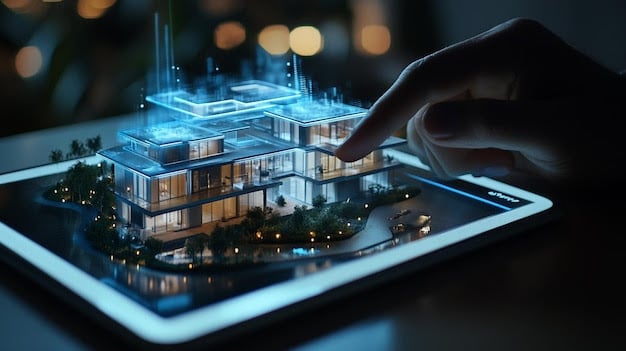
There is a huge interest in “smart buildings”, equipped with sensors that collect data and are connected to the Internet.
“What we wanted to do is to allow all technological initiatives related to real estate to be able to get closer to the heart of the market,” says Nicolas Kozubek, director of Mipim Proptech. “We know that traditional real estate players are talking more and more about technology and innovation, needing it more and more,” he adds.
Technology companies are exhibiting and highlighting the dashboards they offer to their clients. On a tablet, you can see real-time metrics of an office building. Not the social climate but the temperature, humidity, energy consumption… and the owner can refine the parameters to see the detail of a floor or even a room.

One of the leaders in real estate, Gecina, which owns offices in the most sought-after areas of Paris, some buildings have their “digital twin”, a digital model that centralizes all the data of the building in real-time to better exploit it.
“This will have an impact on the user experience and on optimizing the management of our buildings, as well as on environmental impact,” explains Sabine Goueta Desnault, Gecina’s Director of Innovation. Other devices, intended for employees, allow them to know in real-time which rooms, which parking spaces, or even which open-space spaces are free or occupied, and to reserve them if necessary. And to reserve them if necessary.
One of the leaders in this field, the company Thing-it is specialized in “smart buildings” and created in 2016, boasts to have tripled its turnover last year. It equips five groups in the Dax, the main German stock market index. “There are two major trends: the transformation of work and ESG (environmental, social and governance criteria, editor’s note), and we think we are at the intersection of these two trends, and that’s why we have this rapid growth,” explains company founder Klaus Berberich. A success story with the pandemic and the widespread use of telecommuting.
“Post-COVID is still a glaring example because we had problems with people coming back to the office; you have to attract people to work. And to do that, we have to be able to develop new spaces,” says Jacques Guigui, director of technology and innovation at corporate real estate giant CBRE.
“Probably, when the COVID page is turned, the question of what a building brings to its users, what people come to look for in that space, will be questions that will prevail,” says Jérôme Spanek, the French representative of the Dutch company Spaceti, also specialized in “smart buildings.
Clearly, for building owners, it’s a way to make them more attractive and reduce their environmental impact. “When it’s on the tenant’s side, often the reasons they approach us is either because they have internal social pressure that makes them need data, or they have a project to redevelop their premises or move,” he explains. Counting the maximum number of people in the office at the same time can save space… either to create new spaces or to save money.




